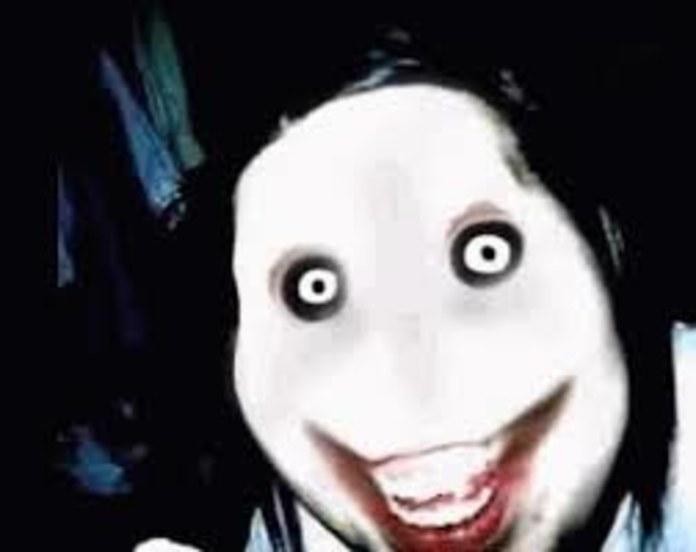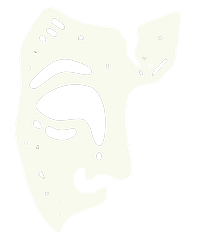In a world where the ordinary meets the extraordinary, there exists a unique realm that tugs at the edges of our comfort zones—a space where the familiar becomes unsettling and the mundane, eerily strange. “” invites readers to delve into this fascinating territory, where shadows stretch longer and whispers echo louder. Here, the heart races not out of fear alone, but out of a curious intrigue that beckons us to linger on the threshold of unease. This exploration seeks to uncover the psychological threads that weave through our experiences with the eerie and the bizarre, illuminating how these feelings of creepiness shape our perceptions of reality. From ghost stories to unsettling art, and from folklore to modern technology, the essence of creepy reverberates through cultures and ages, urging us to confront our own vulnerabilities while revealing the hidden depths of human emotion. Join us as we peel back the layers of this complex phenomenon, inviting reflection on what it truly means to feel unsettled in a world that constantly blurs the lines between safety and strangeness.
Table of Contents
- The Origins of the Uncanny: A Journey Through Psychological Perspectives
- Elements of Fear: Analyzing the Aesthetic of the Creepy in Art and Literature
- Creepy Encounters: Real-Life Experiences that Challenge Our Comfort Zones
- Navigating the Uncanny: Practical Approaches to Embrace and Understand Fearful Experiences
- In Summary
The Origins of the Uncanny: A Journey Through Psychological Perspectives
The concept of the uncanny has long intrigued philosophers, artists, and psychologists alike, rooted in the unsettling feeling evoked by the familiar yet strangely foreign. Sigmund Freud famously explored this paradox in his 1919 essay, illuminating how this disquieting experience arises from repressed memories or emotions resurfacing. The uncanny operates on a spectrum, defined by phenomena such as:
- Familiarity: Recognizing something that feels oddly out of place.
- Ambiguity: Encountering situations that defy clear interpretation.
- Doubling: Instances of doppelgängers or mirrored identities that spark unease.
In contemporary psychology, the uncanny is examined through a lens of cognitive dissonance and existential fear. The discord between expectation and reality breeds a fertile ground for unease, manifesting in both literature and visual art. The table below summarizes key psychological theories related to the uncanny:
| Psychological Theory | Key Concepts |
|---|---|
| Freudian Theory | Repression, the return of the repressed |
| Cognitive Dissonance | Conflicting emotions and interpretations |
| Existentialism | The absurdity of existence and identity |
Elements of Fear: Analyzing the Aesthetic of the Creepy in Art and Literature
At the heart of what renders an artwork or a piece of literature unnerving is a blend of the familiar and the foreign. This juxtaposition creates a tension that unsettles the observer. The aesthetics of the creepy often arise from elements that provoke a primal response, drawing on innate fears and deep-rooted anxieties. Consider the following components that contribute to this atmosphere:
- Subtle Distortion: An object or figure that is altered just enough to seem wrong or off-kilter.
- Isolation: Settings where characters or subjects are lonely or abandoned amplify a sense of vulnerability.
- Ambiguity: The use of vague imagery or narratives that leave the audience wondering what is truly happening.
- Unexpected Juxtaposition: Combining contrasting elements, such as innocence with horror, to provoke discomfort.
These elements often harness the uncanny; that psychological discomfort that arises when something is eerily familiar yet profoundly altered. This disquiet is prevalent in both visual art and narrative structures, where the viewer or reader is invited to venture into spaces laden with dread. Consider how characters in classic ghost stories often embody the paradox of familiarity and estrangement—a beloved childhood friend now possessed or an innocent doll with a sinister life of its own. This exploration leads to fascinating insights into human psychology and the societal fears that shape our understanding of the creepy. The following table highlights notable examples:
| Work | Author/Artist | Creepy Element |
|---|---|---|
| The Shining | Stephen King | Isolation in the Overlook Hotel |
| American Horror Story | Ryan Murphy | Familiar settings turned nightmarish |
| The Conjuring | James Wan | Haunted objects embodying past traumas |
| Edvard Munch’s The Scream | Edvard Munch | Exaggerated emotion depicting existential dread |
Creepy Encounters: Real-Life Experiences that Challenge Our Comfort Zones
Step into the eerie realm of unsettling experiences, where the line between reality and the inexplicable blurs. Many individuals recount moments that send shivers down their spines, challenging their perceptions of safety and normalcy. These encounters often share common themes: the oppressive weight of silence, the sensation of being watched, or the uncanny feeling that something is just out of place. Here are a few chilling examples:
- Apparitions in the Mist: A hiker who reported seeing a shadowy figure flit between trees, only to find no one when he called out.
- Whispers in the Dark: A woman who felt an inexplicable urge to leave her home after hearing soft voices that she couldn’t quite place.
- Unexpected Visitors: A man who encountered an unfamiliar child on a quiet street, only to discover that the child vanished at the turn of a corner.
These spine-tingling tales compel us to confront our deepest fears and question the boundaries of our reality. They serve as a stark reminder that the world is filled with mysteries that lurk just beyond our understanding. Often, these experiences provoke curiosity, leading individuals to investigate the origins of their fears, and in doing so, they stumble upon even more unsettling stories. A collection of these narratives can shed light on the psychological impact such encounters have, and reveal the common threads woven through them:
| Type of Encounter | Common Feeling | Lasting Impact |
|---|---|---|
| Ghostly Apparition | Fear | Heightened awareness of surroundings |
| Unexplained Sounds | Anxiety | Desire to investigate |
| Sudden Temperature Change | Unease | Connection to the supernatural |
Navigating the Uncanny: Practical Approaches to Embrace and Understand Fearful Experiences
Embracing the feeling of unease often requires a shift in perspective. Instead of viewing fear as merely a primal response to danger, consider these practical approaches to cultivate a deeper understanding of your unsettling experiences:
- Mindfulness Practice: Ground yourself in the present moment. By observing your surroundings without judgment, you may find that the elements you fear become less daunting.
- Artistic Expression: Channel your emotions through creating art, whether it is drawing, writing, or music. This can transform fearful experiences into a form of exploration.
- Community Sharing: Engage in discussions with others about their eerie encounters. Sharing stories not only fosters connection but also diffuses the isolation that fear can breed.
Understanding the uncanny can be further enhanced by acknowledging the interplay between fear and fascination. Keep a journal to track your journey through these experiences, documenting observations about what triggers your feelings of discomfort. Consider employing a simple framework to dissect your encounters:
| Trigger | Physical Reaction | Emotional Response | Reflection |
|---|---|---|---|
| Dark Spaces | Increased Heart Rate | Unease | What memories does this evoke? |
| Unfamiliar Sounds | Tension | Curiosity | What could be causing this? |
| Strange Figures | Goosebumps | Fear | What do I fear most about this? |
In Summary
As we conclude our exploration into the shadowy realms of the uncanny, it becomes evident that the essence of what creeps us out is a complex tapestry woven from our fears, cultural narratives, and the sometimes unsettling intersections of the familiar and the strange. This journey through the eerie and the unsettling not only broadens our understanding of what makes us uncomfortable, but also invites us to embrace the unknown as a vital aspect of the human experience.
The uncanny lives not only in literature and film, lurking in the corners of our imagination, but also permeates our everyday lives, reminding us that the mundane can transform into the macabre with just a shift in perspective. As we continue to confront the extraordinary within the ordinary, may we learn to appreciate the subtle intricacies of our own fears and curiosities.
In unearthing the uncanny, we uncover deeper truths about ourselves and the world around us—truths that both intrigue and terrify. With every whispered tale and shiver down our spine, we draw closer to understanding the delicate balance between allure and dread, ultimately realizing that it is this very tension that enriches our existence. As you step away from the shadows and into the light, carry with you the essence of the creepy, for it is a reminder that the unknown can often be as inviting as it is unsettling.


